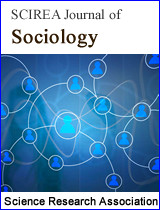Assessing last decimal digits in retracted research articles: accounting for missing zeroes
DOI: 10.54647/sociology841134 64 Downloads 13959 Views
Author(s)
Abstract
The cumulative nature of knowledge in science in general and for social science in particular depends on research being conducted with integrity, with fraudulent research being one of the most harmful of questionable research practices. It has been observed that, in some fabricated research, there has been a deficit of zeroes in the last digits of regression results. In research, authored by Dr. Eric Stewart, that has been retracted, there appears to have been a paucity of zeroes as last digits in his regression results. Eight hypotheses were tested to re-examine the relative lack of zeroes and possible increases in ones or nines as last digits. Some support was found for all hypotheses. It appears that in Stewart’s retracted research, not only were zeroes underrepresented as terminal digits in regression coefficients, but that ones and nines were more frequently detected as terminal digits, in roughly equal proportions. Furthermore, the increased proportions of ones and nines was found to be highly correlated with other anomalies in the same retracted articles, possibly indicative of fabrication of the results in the retracted articles. Further research in this area might use symbolic interaction theory or justification theory to guide our developing knowledge about this type of questionable research practice.
Keywords
Scientific misconduct, fraud, regression digits, zeroes, Eric Stewart, fabrication of results
Cite this paper
Walter R. Schumm,
Assessing last decimal digits in retracted research articles: accounting for missing zeroes
, SCIREA Journal of Sociology.
Volume 7, Issue 4, August 2023 | PP. 276-286.
10.54647/sociology841134
References
| [ 1 ] | Fanelli, D. How many scientists fabricate and falsify research? A systematic review and meta-analysis of survey data. PLoS ONE, 2009, 4, e5738. |
| [ 2 ] | Hu, G., & Li, S. B. Why research retraction due to misconduct should be stigmatized. Publications, 2023, 11, 18, 1-2. |
| [ 3 ] | Fanelli, D. Why growing retractions are (mostly) a good sign. PLoS Medicine, 2013, 10, e1001563. |
| [ 4 ] | Reisig, M. D., Holtfreter, K., & Bersofsky, M. E. Assessing the perceived prevalence of research fraud among faculty at research-intensive universities in the USA. Accountability in Research, 2020, 27, 457-475. |
| [ 5 ] | Mosimann, J. E., Wiseman, C. V., & Edelman, R. E. Data fabrication: Can people generate random digits? Accountability in Research, 1995, 4, 31-55. |
| [ 6 ] | Mosimann, J. E., Dahlberg, J. E., Davidian, N. M., & Krueger, J. W. Terminal digits and the examination of questioned data. Accountability in Research, 2002, 9, 75-92. |
| [ 7 ] | Pickett, J. T. The Stewart retractions: A quantitative and qualitative analysis. Econ Watch Journal, 2020, 17, 152-190. |
| [ 8 ] | Eckhartt, G. M., & Ruxton, G. D. Investigating and preventing scientific misconduct using Benford’s Law. Research Integrity & Peer Review, 2023, 8, 1, 1-10. |
| [ 9 ] | Horton, J., Kumar, D. K., Wood, A. Detecting academic fraud using Benford’s law: The case of professor James Hunton. Research Policy, 2020, 49(8), 104084. |
| [ 10 ] | Schumm, W. R., Crawford, D. W., Lockett, L., Ateeq, B. A., & AlRashed, A. Can retracted social science articles be distinguished from non-retracted articles by some of the same authors, using Benford’s Law or other statistical methods? Publications, 2023, 11, 14, 1-13. |
| [ 11 ] | Breznau, N. Does sociology need open science? Societies, 2021, 11, 9, 1-25. |
| [ 12 ] | Savolainen, J. Unequal treatment under the flaw: race, crime, and retractions. Current Psychology, 2023, advance online. |
| [ 13 ] | Mears, D. P., Stewart, E. A., Warren, P. Y., & Simons, R. L. Culture and formal social control: The effect of the code of the street on police and court decision-making. Justice Quarterly, 2017, 34, 217-247. |
| [ 14 ] | Johnson, B. D., Stewart, E. A., Pickett, J., & Gertz, M. Ethnic threat and social control: Examining public support for judicial use of ethnicity in punishment. Criminology, 2011, 49, 401-441. |
| [ 15 ] | Mears, D. P., Stewart, E. A., Warren, P. Y., Craig, M. O., & Arnio, A. N. A legacy of lynchings: perceived criminal threat among Whites. Law & Society Review, 2019, 53, 487-517. |
| [ 16 ] | Stewart, E. A. School social bonds, school climate, and school misbehavior: A multilevel analysis. Justice Quarterly, 2003, 20, 575-604. |
| [ 17 ] | Stewart, E. A., Johnson, B. D., Warren, P. Y., Rosario, J. L., & Hughes, C. The social context of criminal threat, victim race, and Punitive Black and Latino sentiment. Social Problems, 2019, 66, 194-221. |
| [ 18 ] | Stewart, E. A., Martinez, R., Jr., Bamer, E. P., & Gertz, M. The social context of Latino threat and punitive Latino sentiment. Social Problems, 2015, 62, 68-92. |
| [ 19 ] | Stewart, E. A., Mears, D. P., Warren, P. Y., Baumer, E. P., & Arnio, A. N. Lynchings, racial threat, and Whites’ punitive views toward Blacks. Criminology, 2018, 56, 455-480. |
| [ 20 ] | Schumm, W. R., Crawford, D. W., Lockett, L., AlRashed, A., & bin Ateeq, A. Research anomalies in criminology: How serious? How extensive over time? And who was responsible? Accountability in Research, 2023, in press. Doi: 10.1080/08989621.2023.2241127 |
| [ 21 ] | Carter, M. J., & Fuller, C. Symbolic interactionism. Sociopedia, 2015, 1(1), 1-17. |
| [ 22 ] | Warner, C. T., & Olson, T. D. Another view of family conflict and family wholeness. Family Relations, 1981, 30(4), 493-503. |

